[ad_1]
Tradescantia spp.
Beautifully variegated or in soothing shades of solid green, spiderworts are easy-care houseplants that will give you masses of vines to beautify your indoor space.
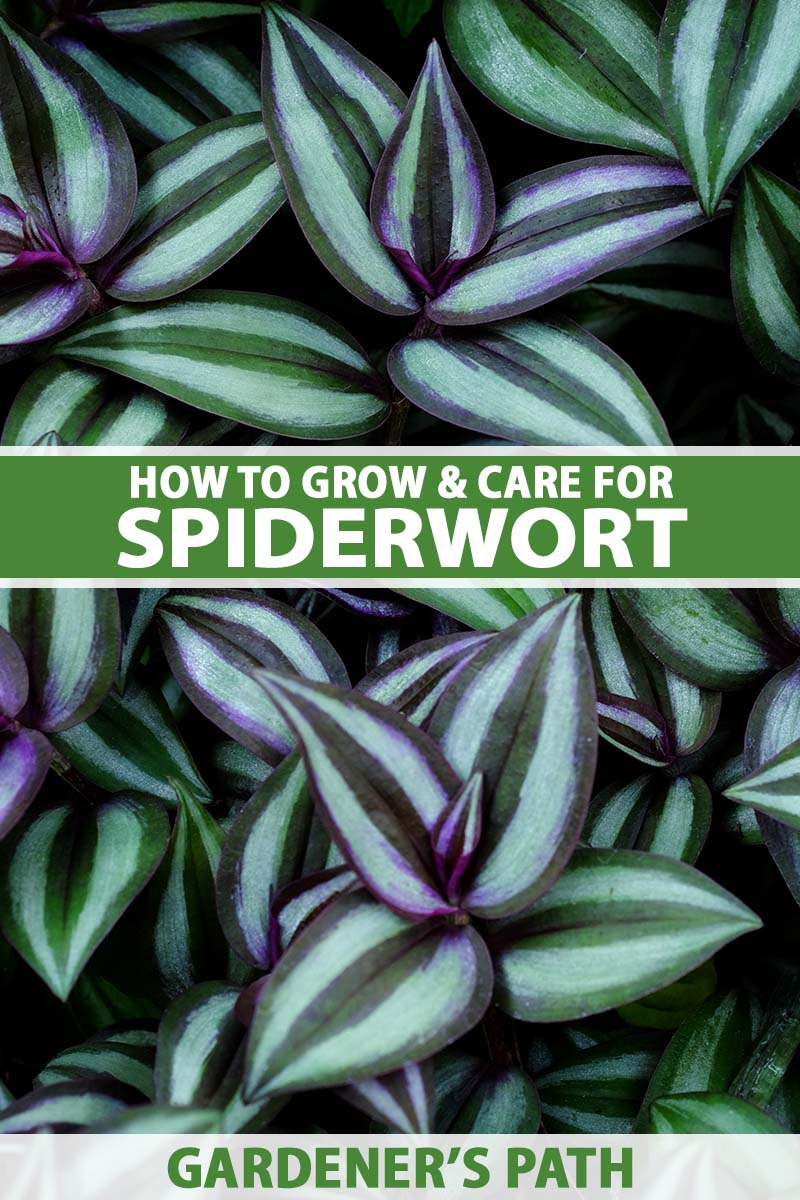
These tropical species are fast growers, so if you want to add a lot of vegetation to your home fast, without too much fuss, these houseplants will make excellent plant companions.
They are certainly proving to be excellent for me.
Many years ago I had something of an indoor jungle – my home was filled with houseplants. I loved being surrounded by all that lush greenery when I was indoors.
But then I decided to move overseas, and every houseplant I owned needed to be rehomed.
Many years later, having returned from my life abroad, I’ve finally decided to start cultivating an indoor jungle again.
And spiderworts are an integral part of this project – I bought two tiny pots of T. zebrina about six months ago.
Thanks to some easy propagation and quick growth, those two tiny pots have been transformed into four medium-sized houseplants, plus two additional small specimens I just started from cuttings.
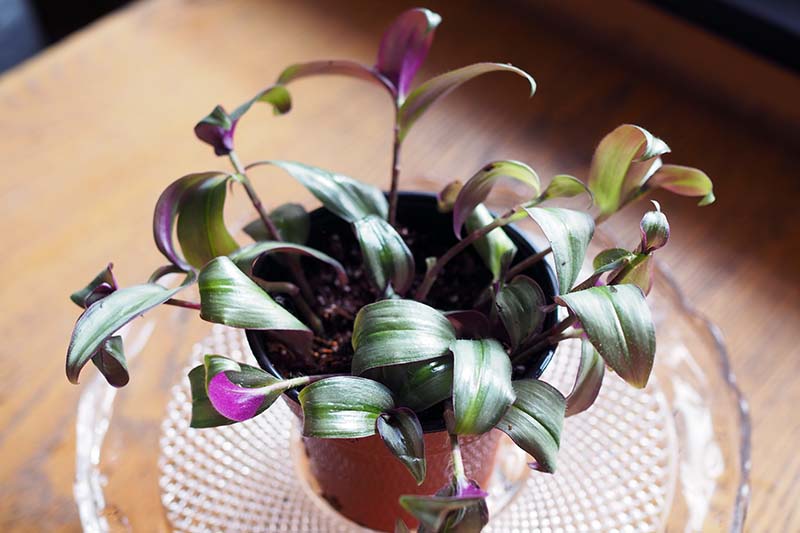
I honestly can’t think of any other houseplant that grows this quickly and is so easy to propagate – can you?
(If you can, let me know in the comments! Asking for a friend…)
And although they’re fairly adaptable, these spiderwort species do have preferred care routines – so I’ll fill you in on the best way to keep them looking gorgeous, and meanwhile, our inch plants can keep busy filling our homes with new foliage.
Here’s what I’ll cover:
While some spiderworts can be grown outdoors as perennials in temperate zones, this article will focus on growing and caring for the many tropical species typically cultivated as houseplants.
Cultivation and History
Spiderwort is a common name that refers to many species in the genus Tradescantia, pronounced “trad-es-KAN-tee-uh” or “trad-es-KAN-shuh.”
As a genus, Tradescantia is part of the Commelinaceae family, also called the spiderwort or dayflower family – so named because many species in this family have flowers that only last a single day.
Other members of this family you may be familiar with include Tahitian bridal veil (Gibasis geniculate), and Asiatic dayflower (Commelina communis).
The Tradescantia genus is made up of 75 species, many of which have a “wandering” or vining growth habit.
These species originate in the Americas, spanning a distance as far north as Canada, and as far south as Argentina.
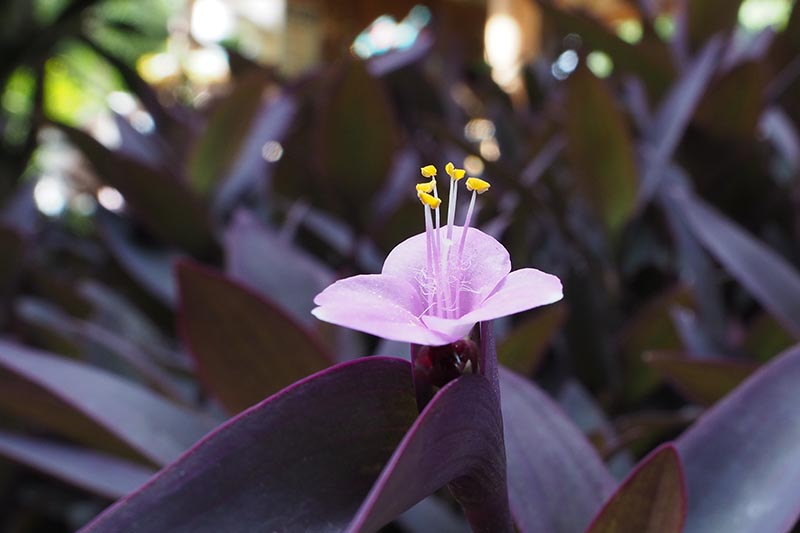
The genus Tradescantia was named by the father of taxonomy, Carl Linnaeus, to honor John Tradescant the Elder and his son, John Tradescant the Younger.
Both were English naturalists, gardeners, and travelers who worked for British monarch King Charles I as landscape designers.
There are two different stories about how this father and son team became associated with the genus that bears their name.
One story is that T. virginiana was brought to Tradescant the Elder as a specimen from an expedition to the Americas that he organized.
The other story is that Tradescant the Younger collected it himself during a voyage to Virginia in 1629, and brought it back to England.
Whatever the truth is behind the arrival in England of that temperate climate perennial, this species and others belonging to the genus inherited the Tradescant family name.
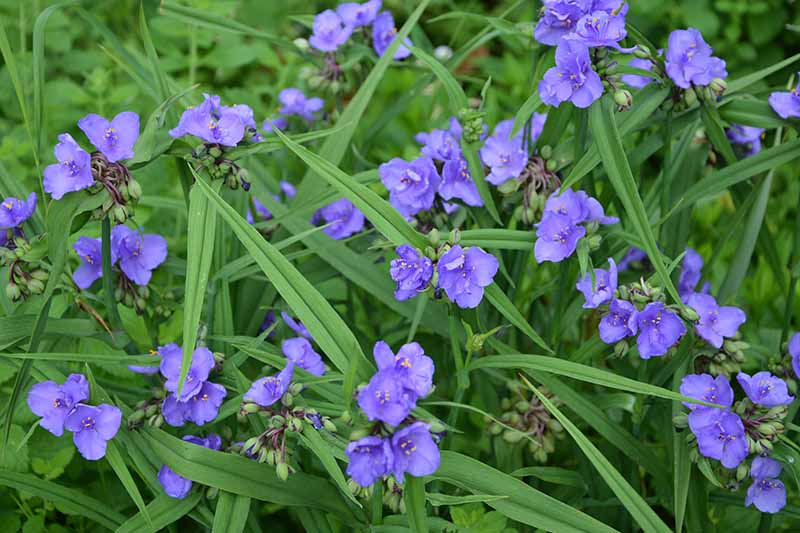
In addition to T. virginiana, this genus includes many species that are native to the US, but those that are used as houseplants originate in tropical areas of Central and South America.
In their native habitat – and in areas where they have naturalized – they grow in moist soil in woodlands, rainforests, and riparian areas.
These tender evergreen perennials have a spreading growth habit, forming thick mats of vegetation, and they are able to root into the soil from their vines, particularly at leaf nodes.
When grown as houseplants, that spreading growth habit translates into long, trailing vines.
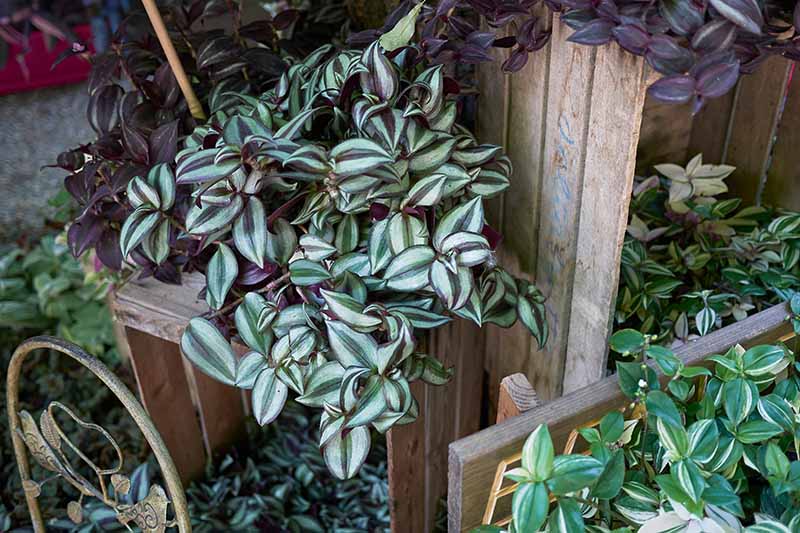
These species have alternate leaves that are oval, elliptical, or strap shaped. Some species are variegated, while others are solid green or solid purple in color.
The leaves of these plants are fleshy, feeling almost like the leaves of succulents. And as with succulents, those fleshy leaves indicate spiderwort’s ability to store water.
The foliage and stems of spiderworts are covered with small hairs, some species more than others. Much like the hairs found on tomato stems, these hairs are able to grow into roots as spiderworts spread.
Small, three-petaled flowers emerge from the ends of stems. These delicate blooms can be pink, white, blue, or purple, depending on the species or cultivar.

You may be more familiar with another common name for these houseplants – “wandering Jew.”
That common name is on the out as far as this writer and this publication goes. We’re not using that outdated common name anymore because it comes with a lot of negative baggage.
Want to know why?
Historically, the term “wandering Jew” referred to a folk figure, a Jewish man who had insulted Jesus (who was, I’d like to point out, also Jewish) on his route to be crucified.
Because of his taunting, the story goes, this man was doomed to wander the earth until the second coming of Jesus.
Please note that this story is merely that – a story. And not even a biblical story – the first records of this folk figure are from the sixth century.
Stories of the “wandering Jew” folk figure span the centuries – and while not all of these stories were purely negative, the legend itself is rooted in negative stereotypes.
To make matters worse, Nazi propagandists co-opted the figure in the 1930s, using it to portray Jewish people in a negative light as part of their justification for the Holocaust.
I think you’ll agree with me that this is not a good association to bestow this houseplant with, or a stereotype we want to perpetuate in any way.
The good news is, there’s a clever replacement nickname for this plant, the very laid-back sounding “wandering dude.” I think this new nickname is fitting for such an easygoing houseplant.
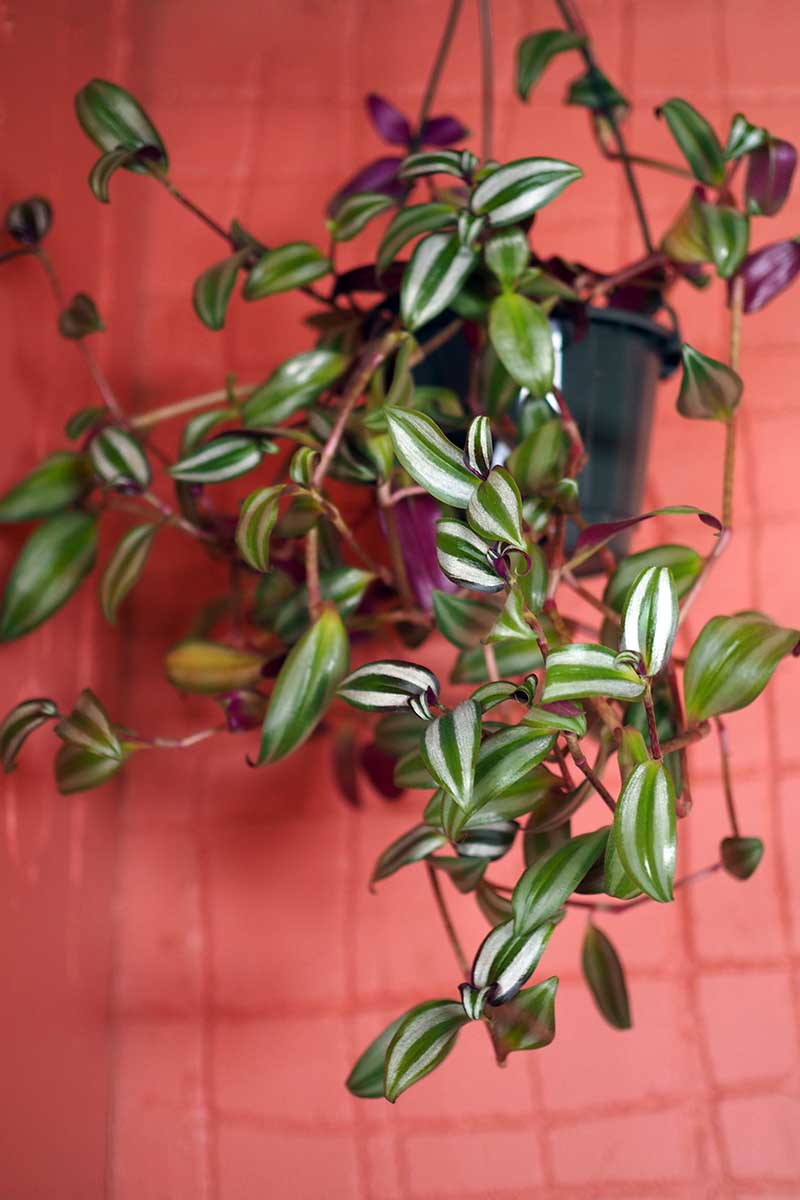
Because of these species’ ability to grow such long vines, the “wandering” part of this nickname also seems fitting. Another alternate name for these species is “wandering Willie.” Or you can do as the Aussies do and call yours “wandering Trad.”
According to Richard G. Hawks, Plant Evaluations Manager at the Chicago Botanic Garden, the common name “spiderwort” was most likely inspired by the “web-like threads” that form from the plant’s sap and harden after stems are severed.
Another common name, “inch plant,” refers to the spacing between leaves. And to me at least, these seem to grow an inch per day – another possible inspiration for this name!
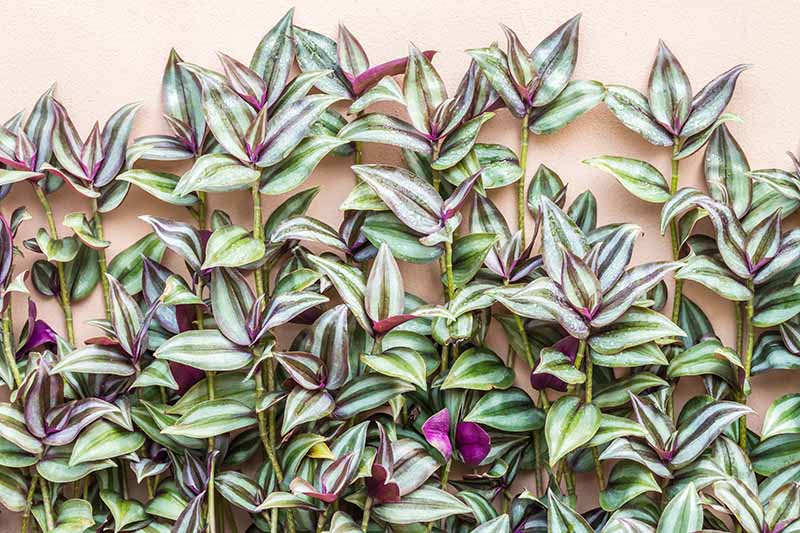
This quick-growing habit makes them wonderful as houseplants for those who want to fill a space with vegetation quickly.
A Note of Caution:
Some Tradescantia species used as houseplants are known to cause contact dermatitis in certain individuals, so consider wearing protective gloves when handling these plants if you are prone to skin reactions.
As for pets, the ASPCA does not provide safety information for all species of Tradescantia, but lists T. fluminensis as toxic to dogs and cats.
However, if you consult the third edition of “Small Animal Toxicology,” available on Amazon, you’ll find a different take on these species.
In this reference book, authors Michael E. Peterson, DVM, and Patricia A Talcott, DVM, categorize Tradescantia species as “possible pet-friendly alternatives,” conveying that no “incriminating” data against these species has been found.
If you have small children or pets, please keep these houseplants out of reach, just to be safe. And if you are reluctant to take any chances with your curious kids or fur babies, consider choosing a confirmed nontoxic houseplant instead.
In addition to keeping tropical Tradescantia species as houseplants, these can also be grown outdoors as annuals, or as perennials in USDA Hardiness Zones 7b-12a, depending on the species.
However, before you decide to take advantage of any species of spiderwort for its ground covering properties, do be forewarned that they can be quite invasive.
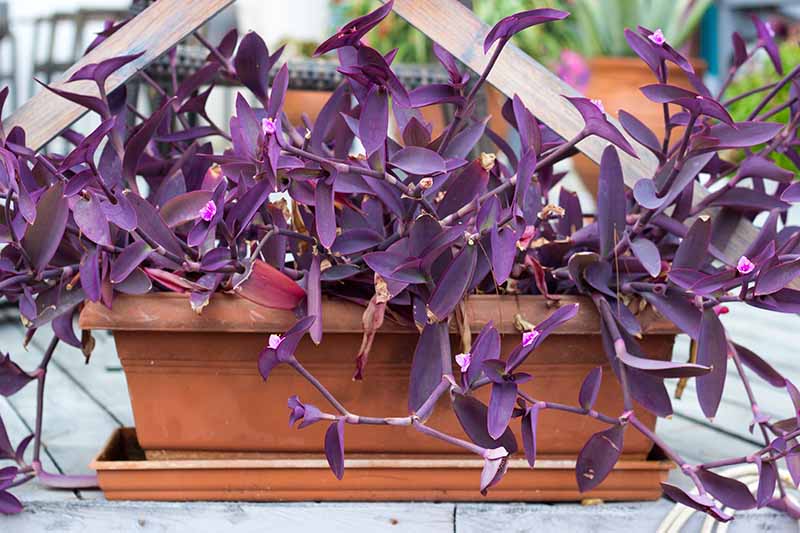
You may want to relegate them to houseplant status where you can make sure they don’t get out of hand.
Or if you do want to use them outdoors, keep them safely confined – use them as members of your container garden.
Propagation
The easiest and most accessible way to propagate wandering dudes is via cuttings.
From Cuttings
Inch plants are incredibly easy to propagate from cuttings.
You won’t need much skill or experience to succeed with this type of propagation project, so it’s great for kids, beginning gardeners, and brown thumbs.
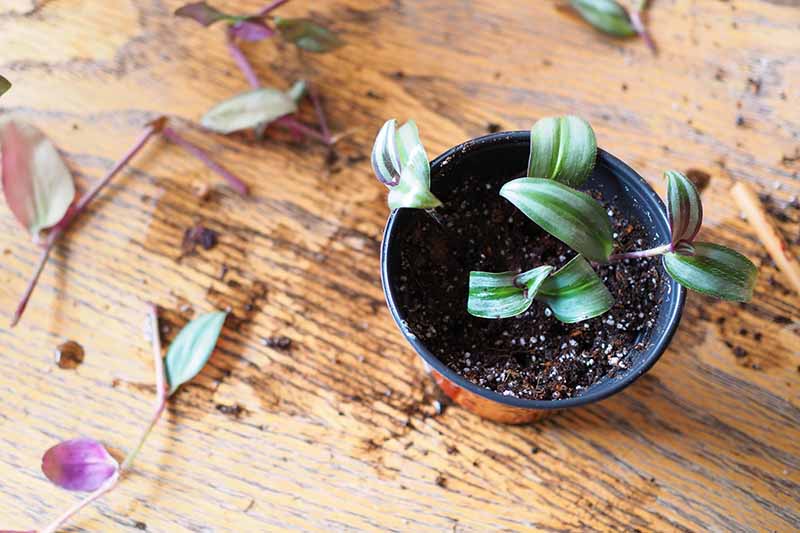
You can either take cuttings and let them root in a glass of water, or simply place your new, unrooted cuttings directly into a pot of prepared houseplant soil.
If you’d like a step-by-step guide to propagating wandering dude from cuttings, check out our guide to spiderwort propagation. (coming soon!)
How to Grow
Growing and caring for these houseplants is easy, making spiderworts great options for beginning indoor gardeners.
To make sure you provide them with the best possible growing conditions, I’m going to provide you with some tips for caring for these tropical beauties.
These are general tips that work for most Tradescantia species grown as houseplants, but always be sure to double check specific growing information for your chosen species as there may be slight differences in requirements.
Choose a Healthy Plant
When keeping houseplants, it’s important to start with a healthy specimen.
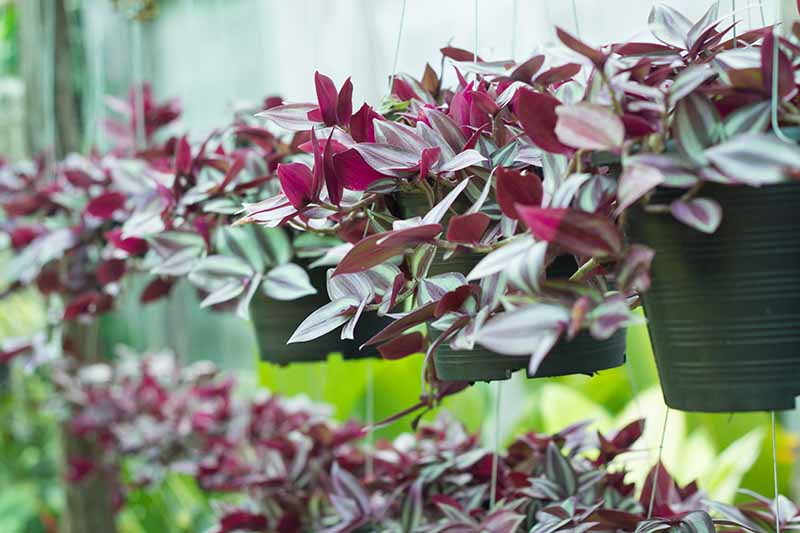
So that your spiderwort growing project doesn’t end in disappointment, here are some ways to ensure you start with a healthy plant:
- Avoid specimens with yellow leaves or large quantities of brown leaves – a few brown leaves are to be expected.
- When ordering spiderworts online during winter, make sure they are sent with a heat pack (or two) to avoid chill damage during transport.
- Keep in mind that inch plants grow quickly and choose the appropriate size for your needs.
- Avoid purchasing specimens with signs of disease or pests.
You’ll learn more about what signs of infection or infestation to look for on spiderworts in the section on managing pest and disease problems below.
Light
Spiderworts are fairly flexible about their growing conditions, and that includes their exposure to light.
They will adapt to light conditions ranging from full sun to medium light.
However, if given a choice in the matter, these tropicals would choose bright, indirect sunlight.

I have personally grown T. zebrina in both full sun on the south side of my home and in indirect medium light on the northeast side of my home.
My spiderworts grew faster in full sun, but they also seem to be tolerating their current northeast exposure without any signs of stress.
If you don’t have much natural light available, either because of the orientation of your home or because you live in a climate where you frequently experience cloudy weather, such as the Pacific Northwest, you may want to consider supplementing with a grow light.
You can read more about what type of lamps to use for your plants in our dedicated article on grow lights for indoor gardening.
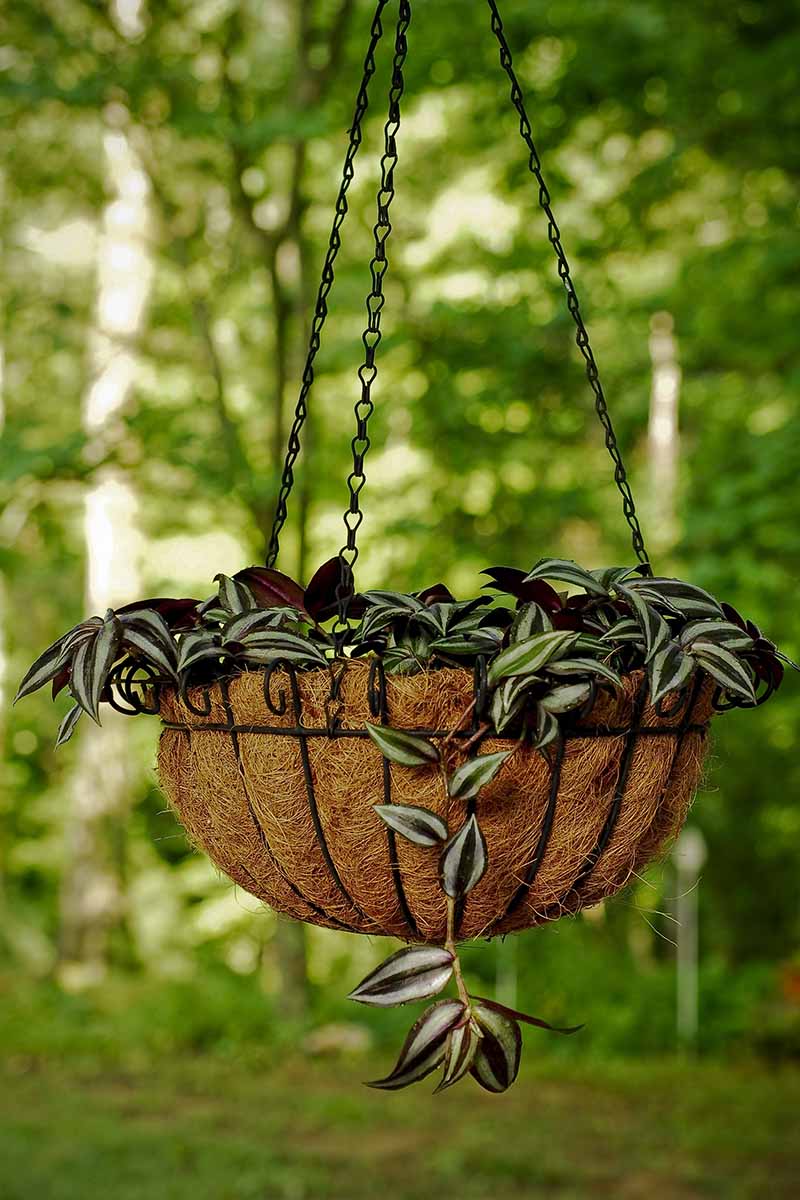
And if you place your wandering dude outdoors during the summer, you may need to put it in a location where it gets some shade during the hottest part of the day, since some species will scorch under too much direct sun.
Temperature
Tradescantia houseplants are tender perennials, and as such, they do well when kept at average household temperatures – that is to say, ideally around 70°F, or at least somewhere in the range of 50 to 80°F.
Water
Spiderwort houseplants have moderate moisture needs, but they are, in fact, fairly tolerant.
They will not usually respond too poorly if you overwater them once in a blue moon, and they also have some built-in resistance to being underwatered, thanks to their fleshy leaves.
Please remember, however, that although spiderworts may seem indestructible, they don’t have quite the water storage capacity of a cactus, so don’t think you can get away with total neglect. Find a good watering schedule and stick to it.
The best rule of thumb for watering spiderworts is to let the top one to two inches of soil dry out in between waterings.
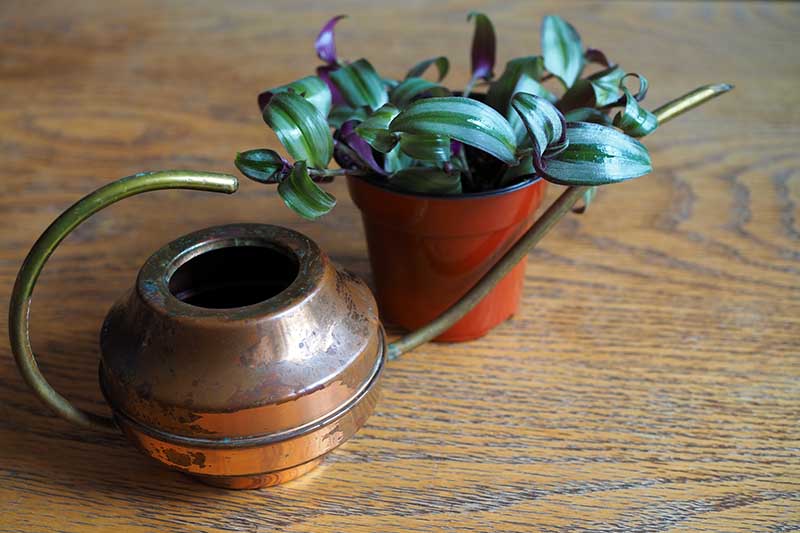
It can also be helpful to lift your inch plant’s pot to check it for dryness. Get to know how heavy the plant feels when it needs to be watered – this will prevent you from having to stick your finger into the plant’s soil every time you check it.
When it’s time to rehydrate your wandering dude, water the surface of the soil instead of holding your watering can directly over your plant.
Reduce watering somewhat during the winter since they don’t need quite as much water during the cooler weather.
For me, that means shifting to watering every ten days instead of every week. However, the conditions in your home may be different, so check your plants, and adjust your watering routine accordingly.
Humidity
Since spiderworts originate in wet, tropical zones, they appreciate a bit of extra humidity.
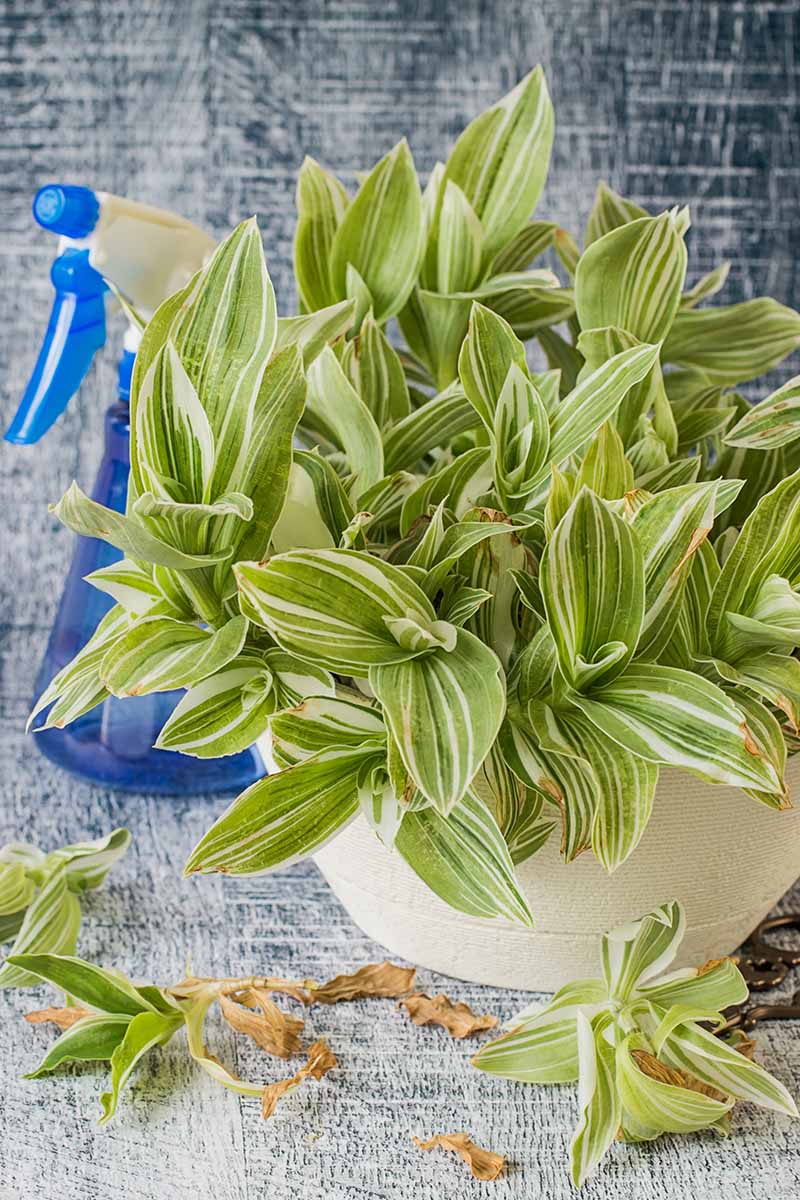
While certainly not as fussy about relative humidity as prayer plants or orchids, a daily misting is a good idea, particularly if you live in a drier climate like I do, or if your indoor air is particularly dry during winter.
Spritz them in the morning rather than at night, to minimize the risk of fungal infection.
Growing Tips
- Provide bright, indirect light.
- Water when the top one to two inches of soil are dry.
- Keep at room temperature.
Maintenance
Wandering dudes will do fine without much maintenance, but for the attentive plant parent, here are some tips:
Fertilizer
They usually seem pretty tough, so you might think you could bypass the fertilizer altogether.
But here’s the thing – when growing outdoors, plants have access to a rich diversity of nutrients and minerals in the soil which is constantly being refreshed.
That doesn’t happen for houseplants, so it does help to offer them some fertilizer, particularly during spring and summer when they are growing actively.
That’s why I like to fertilize my houseplants with worm compost tea, an organic fertilizer option, rather than letting them go without.
If you have a worm compost bin of your own, you can use some of the castings to make a fertilizer “tea” for your wandering dude.
Pruning and Shaping
Tradescantia species don’t require pruning – but it is something you might want to consider if you want to have more of a say over the way your spiderwort looks.
For a fuller-looking specimen, pinching or cutting back vines will help to encourage bushier growth. Where you make your pinch or cut, the stem may branch.
Shorter stems will also be able to grow upwards rather than trailing down, giving a more upright overall appearance.
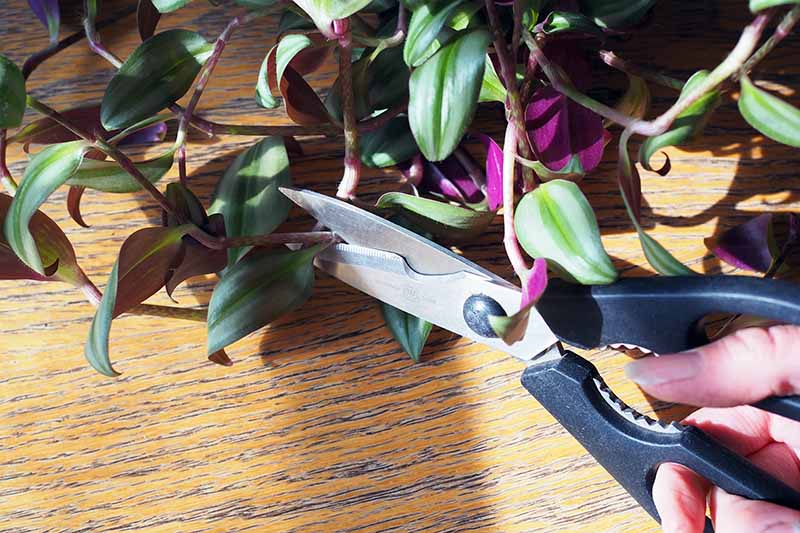
Another time to prune is if your plant starts to look a bit scraggly.
These species can handle hard pruning, so feel free to cut your spiderwort back fairly drastically, leaving only a few inches of stem intact if that’s what you need to do
On the other hand, if you want your inch plant to have long, trailing vines, there’s a trick to help with this as well:
Instead of hanging the container from a ceiling hook, try letting your plant grow on a flat surface for a while, which will encourage its stems to spread out horizontally.
Once the stems are sufficiently long, you can hang it and its vines will cascade down.
Repotting
Your Tradescantia will not need to be repotted very often. When it starts drying out too quickly between waterings, you may want to repot.
Also, when your plant starts to become rootbound – if you see roots emerging through drainage holes or from the soil surface – this is a good sign that it’s time to repot, as well.
To repot your spiderwort, choose a pot that is only one to two inches larger than the current pot, and make sure it has drainage holes.
They do best in peaty, well-draining soil with a pH of 6.0-8.0, so regular houseplant potting soil will work fine.
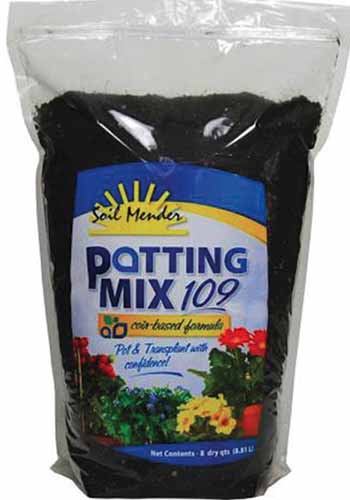
Soil Mender 109 Potting Mix
I particularly like Soil Mender 109 potting mix, which contains coconut coir instead of peat moss and is available for purchase at Arbico Organics.
Once you have your soil and new pot at the ready, remove the plant from its old pot. If the plant has become root bound, gently loosen up the outer layer of roots.
This will help the roots spread into their new soil.
Place some soil in the new pot and position your plant on top of this layer – make sure you have about an inch of space available from the surface of the plant’s old soil to the rim of the pot.
If not, remove some of the potting soil from beneath the plant.
Finish filling in with soil, and water in your freshly repotted spiderwort.
Cultivars to Select
Now that you have the basics of good spiderwort care down, are you ready to explore your options? Here are a few top picks.
First, ‘Purple Heart’ is a cultivated variety of T. pallida, a species native to Mexico.
This variety has solid purple foliage and delicate pink flowers. Its elliptical leaves are long, with purple undersides, and the plant also has purple stems.
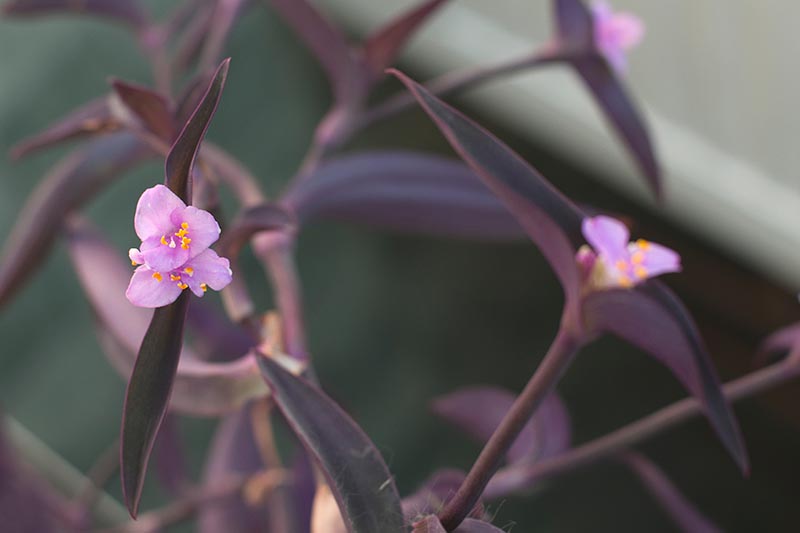
Also known as T. pallida ‘Purpurea,’ it is sometimes taxonomically classified as Setcreasea purpurea. It also goes by the common names “purple queen” or “purple spiderwort.”
When grown in shady conditions, its foliage takes on a green color. To ensure that deep purple hue this plant is known for, place it in a location where it will receive full sun.
This species can survive outdoors year-round as a perennial in USDA Hardiness Zones 7b-11a.

T. pallida ‘Purple Heart’ in 4-inch pot
‘Purple Heart’ is available for purchase in a four-inch pot from Succulents Box, via Amazon.
Next up, silvery inch plant is one of the common names for the species T. zebrina.
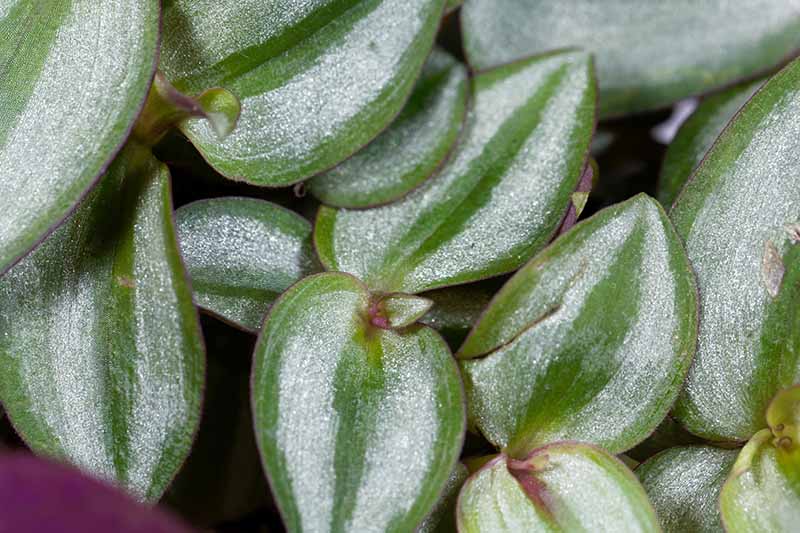
This species sports green and purple leaves with silver stripes on the leaf uppers, and maroon undersides.
The silver stripes on the foliage of this species are iridescent, and shimmer when the light hits them.
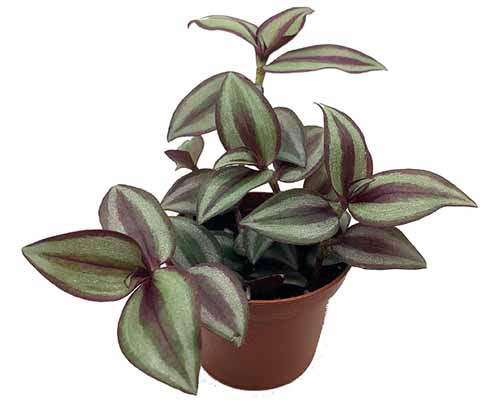
T. zebrina Silvery Inch Plant in 2.5-inch pot
You’ll find silvery inch plant in a two-and-a-half-inch pot from Hirt’s Gardens via Walmart.
And there are many other gorgeous cultivars to discover, so be sure to read our article on some of the most intriguing varieties of spiderwort houseplants. (coming soon!)
Managing Pests and Disease
In keeping with their laid-back demeanors, wandering dudes aren’t particularly prone to either diseases or insect infestations.
That’s one of the reasons these plants can so easily become invasive when grown outdoors.
However, it’s always good to know what to be on the lookout for. Here are some of the most common diseases and pests to affect these houseplants:
Insects
Even the most resilient of houseplants can succumb to an insect infestation.
Know which pests might affect your spiderworts so that you can nip them in their pesky little buds.
Aphids
Aphids are tiny sap-sucking insects that tend to set up camp on the undersides of foliage. They suck nutrients out of plants, which sometimes results in curled or wilted leaves.
As they feed, they excrete honeydew, a sticky substance that can provide a foothold for sooty mold.
To treat an aphid infestation, first try removing them with a blast of water, either from a garden hose or from the spray nozzle on your sink or bathtub. You might also try simply wiping them away with a damp paper towel.
If water alone doesn’t seem to do the trick, neem oil can be used as a nontoxic insecticide. Neem is also a fungicide and will take care of any fungal issues that may arise as well.
Simply apply the product according to the manufacturer’s instructions.
Learn more about how to manage aphids in this guide.
Mealybugs
Mealybugs are another group of nutrient suckers. They are white and fuzzy, and may give your inch plant the appearance of having bits of cotton stuck on it, particularly on the stems.
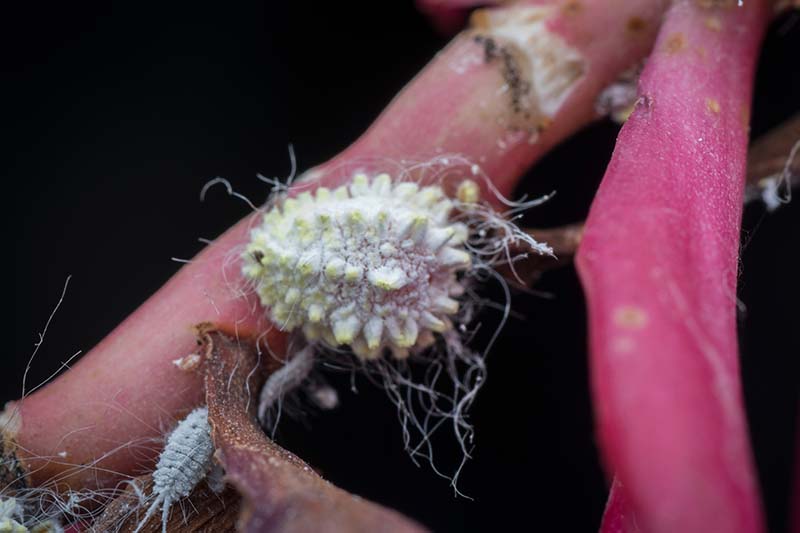
Like aphids, they can sicken your spiderwort by stealing its nutrients – and a serious infestation can kill your houseplant.
Mealybugs can be wiped away with a damp paper towel, or they can be killed with an application of neem oil.
Scale
Like aphids and mealybugs, scale insects can also damage your inch plants by sucking away valuable nutrients.
To an untrained eye, these pests may be hard to spot – they look like tiny brown bumps and can be mistaken for bits of dirt. It’s all a bit of clever camouflage.
Under a brown shell, there’s an insect attached to your plant, greedily sucking away.
Scale can appear on either leaves or stems and can cause leaves to turn yellow.
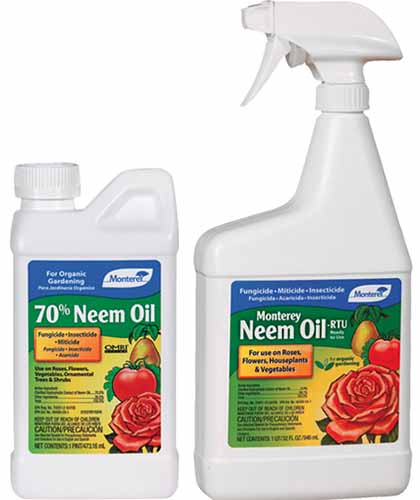
Monterey Neem Oil
To remove these pests, you can pick them off by hand, or treat the plant with neem oil, such as this product from Monterey, available at Arbico Organics.
Rubbing alcohol can also be used to remove aphids, mealybugs, and scale, but it should be tested on a single leaf before trying wider application, as it can burn the leaves on these plants.
Disease
Easygoing inch plant does not often succumb to disease. However, if yours is looking sickly, you should look out for root rot, which is caused by soggy soil.
When well-intentioned plant parents give their houseplants a little too much love (i.e. water), the plant’s soil can remain too wet, which prevents the roots from getting oxygen.
Oxygen starved roots can rot, preventing the foliage from receiving the water it needs. And to make matters worse, the soil and rotting roots can provide the perfect conditions for bacteria and fungi to invade.
Although these plants do well with moist soil, they also require good drainage.
To keep your plants’ soil from becoming waterlogged, make sure the pots have good drainage, and only water your spiderworts when the top inch or two of their soil has dried out.
To remedy a case of root rot, remove the plant from its soil, trim back any rotting roots, repot the plant, and make sure to either adjust watering or provide better drainage.
Best Uses
Spiderworts look marvelous when positioned so their long vines can cascade over the rims of their pots and trail down – which means hanging baskets and plant stands are both excellent options for showcasing your specimens as houseplants.
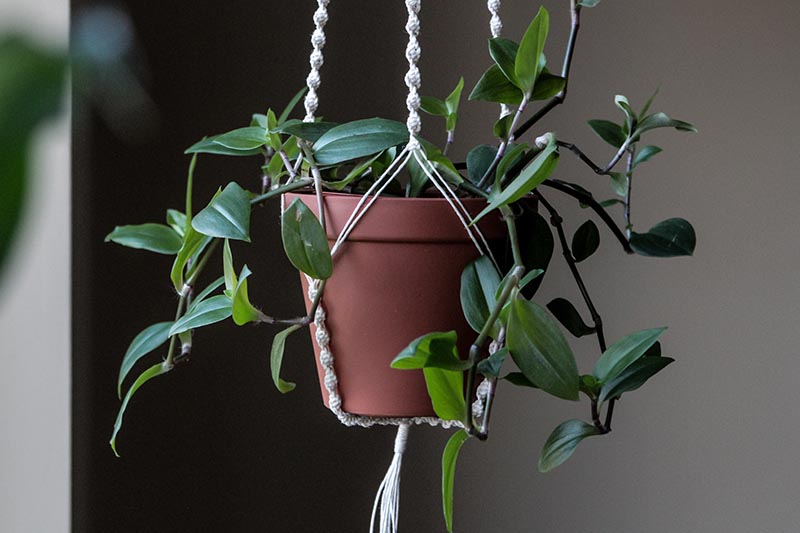
However, there are no rules that state that you must let your wandering dude grow long tresses.
Instead, you could give him a spikey coif by keeping his vines trimmed back – and start new plants with these cuttings.
As an outdoor plant, spiderworts can be used as annuals in your flower beds – or as perennials if you live in the right zone. Be sure to check individual cultivars for information about recommended growing zones.
But – I’ve told you once, and I’ll tell you again – these plants, though well behaved in a pot, can quickly become unruly when planted in the ground, and in some regions are considered invasive.
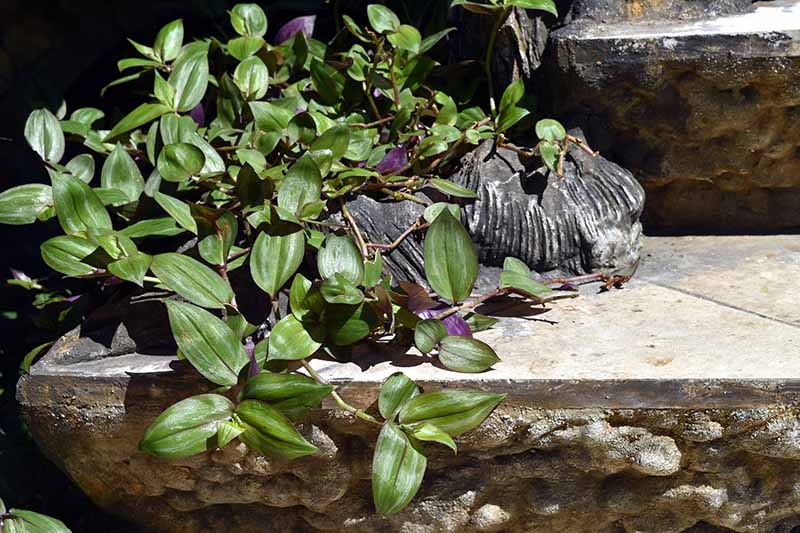
So either let your dude wander within the confines of your home, or consider growing him in a container outdoors.
And if you choose to ignore this advice – just don’t say I didn’t warn you.
Quick Reference Growing Guide
| Plant Type: | Evergreen herbaceous perennial | Foliage Color: | Green, purple, silver, pink, cream |
| Native To: | Central America | Soil Type: | Peaty potting mix |
| Hardiness (USDA Zone): | 7b-12 | Soil pH: | 6.0-8.0 |
| Exposure: | Full sun to part shade | Soil Drainage: | Well-draining |
| Height: | 6-12 inches | Companion Planting: | Christmas cactus, fiddle-leaf fig, orchids, pilea, prayer plant, snake plant, spider plant |
| Spread: | 12-48 inches | Uses: | Houseplant, ground cover, spiller |
| Growth Rate: | Fast | Order: | Commelinales |
| Water Needs: | Moderate | Family: | Commelinaceae |
| Maintenance: | Low | Genus: | Tradescantia |
| Tolerance: | Low light, humidity | Species: | Chrysophylla, fluminensis, pallida, sillamontana, spathacea, zebrina |
| Pests & Diseases: | Aphids, mealybugs, scale, spider mites, white flies; root rot, stem rot |
An Indoor Jungle, Inch by Inch
If you have let spiderwort into your heart, you should now be prepared to also let it into your home, and to keep it happy there.
I know I’m enjoying the masses of lovely vegetation this plant provides me, and the easy opportunities to create even more houseplants.
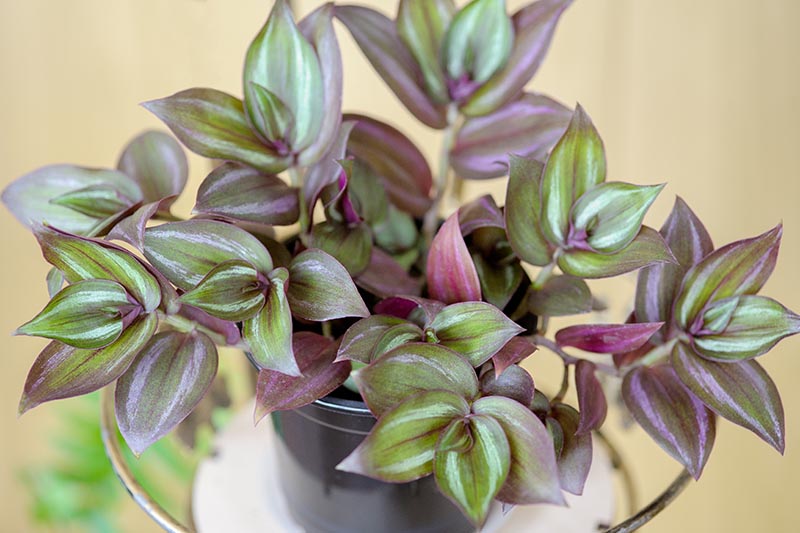
What do you love the most about this plant – how easy it is to care for, how fast it puts out new foliage, or how supremely simple it is to propagate? Let me know below in the comments section below!
If filling your home with houseplants and creating your own indoor jungle sounds like a marvelous idea, here are a few other articles that are bound to get your indoor gardening juices flowing:
Photos by Kristina Hicks-Hamblin © Ask the Experts, LLC. ALL RIGHTS RESERVED. See our TOS for more details. Product photos via Earthworm Technologies, Elsevier, Hirt’s Gardens, Kauai Garden, Monterey, Rodale, Soil Mender, and Succulents Box. Uncredited photos: Shutterstock.
About Kristina Hicks-Hamblin
Kristina Hicks-Hamblin lives on a dryland permaculture homestead in the high desert of Utah. Originally from the temperate suburbs of North Carolina, she enjoys discovering ways to meet a climate challenge. She is a Certified Permaculture Designer and a Building Biology Environmental Consultant, and holds a Bachelor of Arts degree in liberal studies from the University of North Carolina at Greensboro. Kristina loves the challenges of dryland gardening and teaching others to use climate compatible gardening techniques, and she strives towards creating gardens where there are as many birds and bees as there are edibles. Kristina considers it a point of pride that she spends more money on seeds each year than she does on clothes.
[ad_2]
Source link


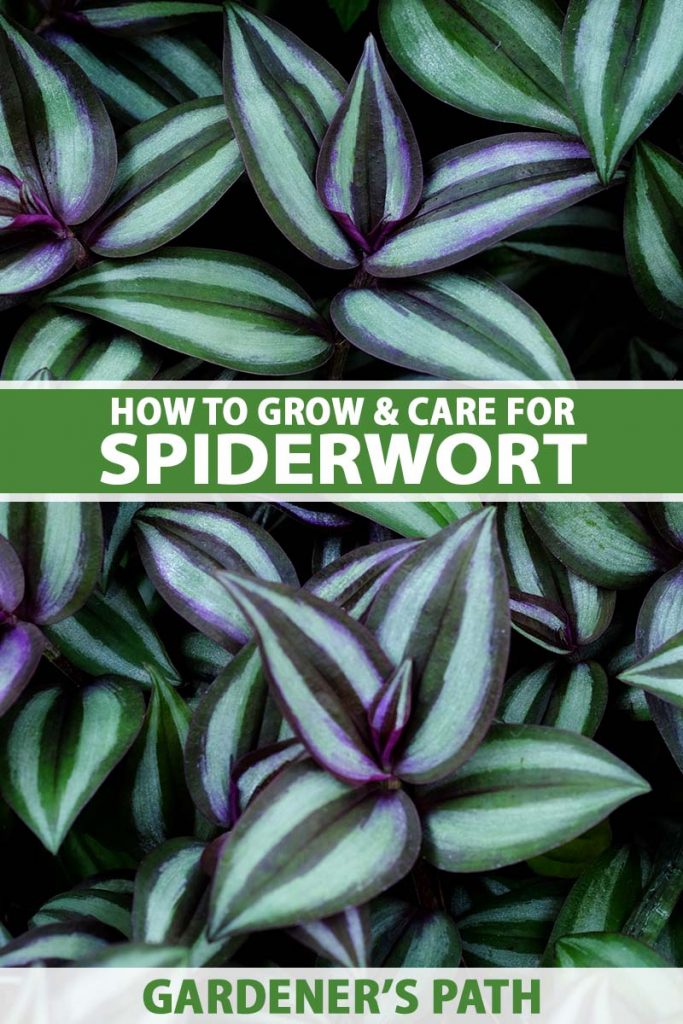






 + Planting String of Watermelon Succulents
+ Planting String of Watermelon Succulents  with Garden Answer
with Garden Answer


